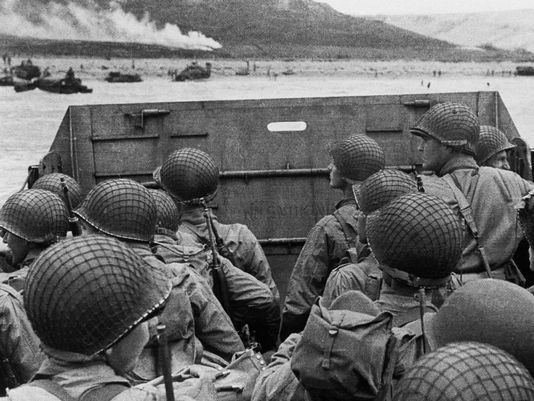To go or not to go?
It was 73 years ago this week that Gen. Eisenhower's chief meteorologist, Group Capt. James Martin Stagg, made one of the most important weather forecasts of all time. Defying his colleagues, he advised Ike to postpone the invasion of Normandy by one day from June 5, 1944, to June 6, because of uncertain weather conditions.
A book by author John Ross — "The Forecast for D-Day" — sees that forecast as a pivotal moment in world history.
A bad forecast would jeopardize the entire operation," Ross writes in the book. "If he gave the word to 'go,' and the weather turned sour, the lives of thousands of men and massive amounts of equipment would be lost.
If he did not go and the weather was good, Germans might have spied the massive build-up in southern England and the elements of the invasion fleet headed for Normandy. The odds that the Allies' plans would have been discovered would increase exponentially," Ross notes.
Stagg — who was actually a geophysicist by training — and his fellow British and American meteorologists were operating without any of the technology and equipment that today's forecasters take for granted, such as satellites, weather radar, computer modeling and instant communications.
Relying mainly on surface observations from military and civilian weather observers in the British Isles and in western Europe and a few military observers at sea, predicting the weather more than a day or two in advance in that era was unrealistic.
Additionally, weather prediction in England and Europe — especially before the advent of satellites — was much trickier than forecasting in the USA. Here in the states, even in that era, weather systems could be tracked for days after hitting the West Coast and moving east, while European forecasters were often operating "blind" with the empty ocean to the west.

Predicting the exact timing, track and strength of these storms put Group Capt. Stagg and his colleagues under almost unimaginable pressure and conflict, Ross noted, with the fate of the war and perhaps the world hanging in the balance.
What troubled the meteorologists in the days leading up to D-Day was a parade of storms that barreled across the Atlantic and into the British Isles, any one of which would have stirred up the dangerous waters of the English Channel where the fleet was gathering, and provided unwelcome cloud cover for the aerial assault of Normandy.
The invasion was originally scheduled for the morning of June 5, but the weather forecast was bad enough for Stagg to advise Ike to postpone it by one day, despite protests from his fellow meteorologists, who felt the weather would be good enough for the mission to take place.
But had it remained June 5, heavy seas, high winds and thick cloud cover from a potent storm centered north of Scotland would likely have caused the invasion to fail and set world history on a different course.
While far from perfect, the weather on the morning of June 6 was good enough for the invasion to proceed successfully.
Had the mission not gone on June 6, the next window would have been a full two weeks later, when tides and moonlight were right. On that day two weeks later, a completely un-forecast gale would have caused the invasion to fail.
Ross said that had the invasion failed, the secrecy about when and where the Allies would land would be lost, victory in Europe would have been delayed for a year, and the Soviet Union might have taken control of the continent.
Years later, during their ride to the Capitol for his inauguration, President-elect John F. Kennedy asked President Eisenhower why the Normandy invasion had been so successful.
Ike's answer: "Because we had better meteorologists than the Germans!"
The Forecast for D-day: And the Weatherman behind Ike's Greatest Gamble, by John Ross, is published by Lyons Press, an imprint of Globe Pequot Press, and is available from Amazon.


